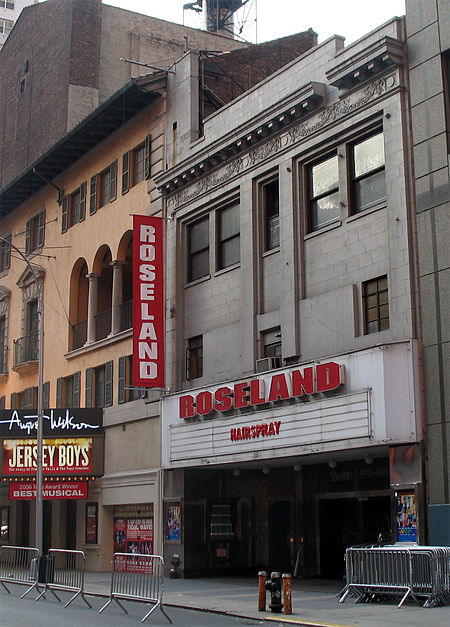Roseland Ballroom

The Roseland Ballroom was a multipurpose hall, in a converted ice skating rink, with a colorful ballroom dancing pedigree, in New York City's theater district, on West 52nd Street in Manhattan. The venue, according to its website, accommodated 3,200 standing (with an additional 300 upstairs), 2,500 for a dance party, between 1,300 and 1,500 in theatre style, 800–1,000 for a sit-down dinner, and 1,500 for a buffet and dancing.The venue hosted a wide range of events, from a Hillary Clinton birthday party, to annual gay circuit parties, to movie premieres, to musical performances of all genres, including Beyoncé's Elements of 4 show and internet stars Team StarKid's Apocalyptour National Concert Tour. It was also known as the place American singer Fiona Apple broke down during a concert in 2000.The rear of the venue faced West 53rd Street and the Ed Sullivan Theater.On October 18, 2013, it was announced that the venue would close on April 7, 2014. Lady Gaga completed a short residency as the last performer before the Roseland Ballroom closed.
Excerpt from the Wikipedia article Roseland Ballroom (License: CC BY-SA 3.0, Authors, Images).Roseland Ballroom
West 53rd Street, New York Manhattan
Geographical coordinates (GPS) Address Website Nearby Places Show on map
Geographical coordinates (GPS)
| Latitude | Longitude |
|---|---|
| N 40.763627 ° | E -73.984122 ° |
Address
Aro
West 53rd Street 242
10019 New York, Manhattan
New York, United States
Open on Google Maps







